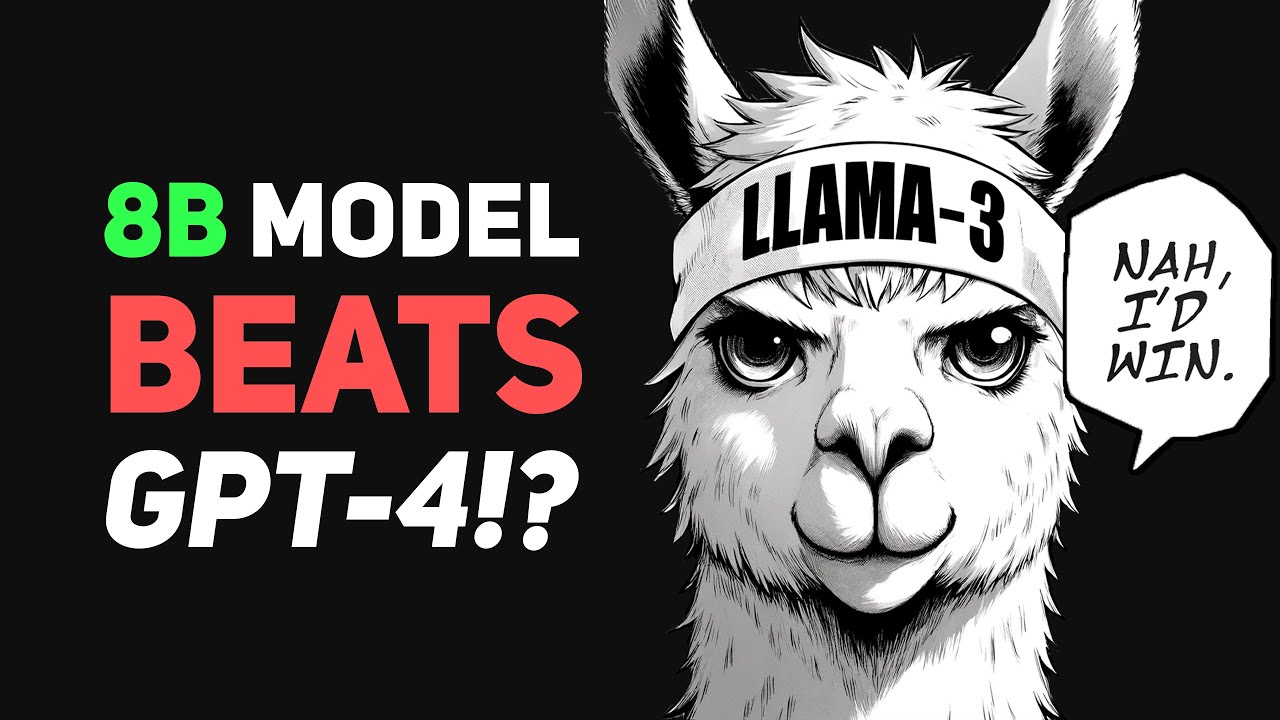Llama 3 has impressed the AI community with its efficient training methodology and high-performance models, surpassing expectations and outperforming larger models like Mixr 7B. The decision by Meta to open-source Llama 3 reflects a strategic move aimed at driving innovation in the AI sector and challenging traditional business perspectives, potentially leading to advancements in the AI landscape.
In the rapidly evolving world of AI, companies like OpenAI and XAI have been releasing impressive open-source models, such as Gro 1.5 Vision and Llama 3. The highlight of Llama 3 is not just its model architecture but also its training methodology, which has surprised many. Llama 3 offers models in three sizes - 8B, 70B, and a massive 400B-parameter model still in development. Despite not publishing the 400B model, Llama 3 has showcased its performance through fine-tuning and evaluation on benchmarks, surpassing expectations compared to models like GPT-4 Turbo and CLA 3.
The Llama 3 models, particularly the 8B and 70B versions, have outperformed their predecessors and even larger models like Mixr 7B. The efficiency and capabilities of the Llama 3 models have impressed the AI community, with the 8B model excelling in various benchmarks and the 70B instruct model showcasing exceptional performance, even surpassing GP4 levels. Llama 3’s success can be attributed to its training on a massive 15 trillion tokens dataset, 75 times beyond the optimal training for an AP model, showcasing the benefits of training beyond conventional limits.
Despite the high costs and resources involved in developing Llama 3, the decision to open-source these models reflects a strategic move by Meta, the company behind Llama 3. By open-sourcing their models, Meta aims to drive innovation and potentially save costs in the long run, as seen in the success of previous open-source initiatives like the Open Compute Project. This approach challenges traditional business perspectives in the AI sector, emphasizing the importance of building ecosystems and collaborative innovation.
The integration of Llama 3 into Meta’s AI platform and the potential deployment of the 400B model hint at a new wave of advancements in the AI landscape. Nvidia’s optimization of the Llama 3 models and the free inferences offered on their platform demonstrate the widespread impact of Llama 3’s open-sourcing. The competition with OpenAI and the implications of open-sourcing such advanced models raise questions about the future direction of AI development and the role of open-source initiatives in the industry.
The speaker, reflecting on potential career paths and expressing gratitude to supporters, announces plans to focus on creating more YouTube content related to AI research. Acknowledging the challenges and complexities of the field, they seek support and collaboration from like-minded individuals for future projects. The video ends with an appeal for support through platforms like Patreon and a call for collaboration in AI research and content creation, highlighting the importance of community engagement and shared learning in the pursuit of advancing AI technologies.
